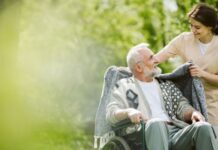Antibodies are among the most essential protein categories in the human body. Besides the immunity function native antibodies play, recombinant antibodies are crucial to diverse research fields and medical applications, including therapeutics, drug discovery, clinical research, diagnostics, and imaging.
Like other proteins, antibodies feature amino acids as their primary building blocks; DNA generates the genetic code that determines how the amino acids join to form the protein. Therefore, antibody sequencing entails establishing the sequence of amino acids in a biological sample.
The sequence is crucial in defining arable domains and other antibody characteristics. Keep reading to learn more about sequencing, including benefits and workflow models.
Why Does The Antibody Sequence Matter?
As stated above, amino acids are the primary protein structure. A protein structure determines its physical and chemical characteristics and applications.
The human body and most vertebrate organisms have five types of antibodies; IgA, IgD, IgE, IgM, and IgG. Each antibody class serves a different function in the body based on its heavy chain or light chain structure.
Additionally, the antibody types above fall into two broad categories; monoclonal and polyclonal antibodies, based on the immune cell type where they originate. Also, antibodies have unique variable regions that dictate how they attach to antigens during an immune response or research applications.
Besides the identified native antibodies the human body generates, de novo antibodies (those that do not occur naturally) and humanized antibodies also exist. Identifying such proteins and protein fragments is challenging, especially without knowing their origins, and that is where antibody sequencing comes in. Below is an overview of the advantages of antibody sequencing.
Antibody Sequencing Tools
Antibody sequencing tools are software and databases that analyze an antibody’s structure to establish and report its sequence. Additionally, such tools perform antibody characterization.
The tools feature algorithms that predict an antibody’s light chain, heavy chain, and variable regions, helping to establish its sequence. They use select databases to compare the protein in question against the sequences in accessible antibody libraries.
De Novo Antibody Sequencing
De novo antibody sequencing entails determining an antibody’s sequence straight from a fragment rather than sub-cloning from cell lines. Mass spectrometry is the primary technique used in de novo antibody sequencing. Below is an overview of mass spectrometry as a tool for de novo antibody sequencing.
The method utilizes known antibody repertoires for diverse organisms to predict antibody sequences from a peptide fragment. Antibody repertoire is the entire collection or diversity of possible antibody types produced in an organism.
The mass spectrometry process begins with sample preparation by adding digestive enzymes to the peptide or antibody sample to break it down into smaller fragments. Smaller antibody fragments help generate overlapping peptides.
Once ready, the sample mixture goes into the mass spectrometer. A mass spectrometer functions by converting the atoms in the sample mixture into ions. Second, it passes the ions through an electric field followed by a magnetic field.
The ions move through both fields at speeds based on their molecular weights and the amount of charge before bending to form a spectrum. Essentially, lighter and more positively charged ions bend more than heavier and more negatively charged ions. The mass spectrometer presents the results from the spectrometry in a bar graph form.
Interpreting the bar graph entails reading the peaks formed by each set of charged ions in the sample. A high peak indicates an abundance of a particular ion and vice versa for low peaks. Insight into each ion’s molecular size helps predict the light and heavy chain structures in the antibody in question.
Comparing the spectra results from mass spectrometry against antibody libraries help identify antibody sequences in a complex mixture. Moreover, comprehensive antibody libraries include potential somatic mutations and post-translational modifications in an antibody and account for such possibilities in the sequence.
Advantages of Antibody Sequencing
1. Antibody Sequencing Facilitates Recombinant Antibody Production Without A Cell Line
As stated earlier, antibodies fall into two primary categories based on the immunity cells that produce them. Therefore, recombinant antibody production primarily relies on existing cell lines to produce target antibodies.
However, cell line use poses a challenge when unidentified antibodies are in a complex mixture. Antibody sequencing techniques can solve this challenge by predicting the correct antibody sequence from the purified antibody fragment sample.
Most antibody sequencing service providers only require a 95% pure 0.2mg antibody fragment to generate its sequence. The generated antibody sequence can be a template for complete recombinant antibody production.
2. Accuracy
The peak readings in a spectra report positively identify the amino acids making a protein. Therefore, de novo antibody sequencing is highly accurate, and essential for research and other recombinant antibody applications.
3. End-to-end Antibody Production
Most antibody sequencing service providers go beyond spectra reports and use the results as a template for recombinant antibody production. Combining the spectra report with disruptive de no sequencing software can generate an antibody from the N to the C directionality.
Conclusion:
Antibody sequencing plays a significant role in expanding antibody libraries, discovering modifications, and increasing an antibody’s therapeutic potential. It is crucial to biotechnology, and hopefully, more innovations will emerge to streamline the process.























